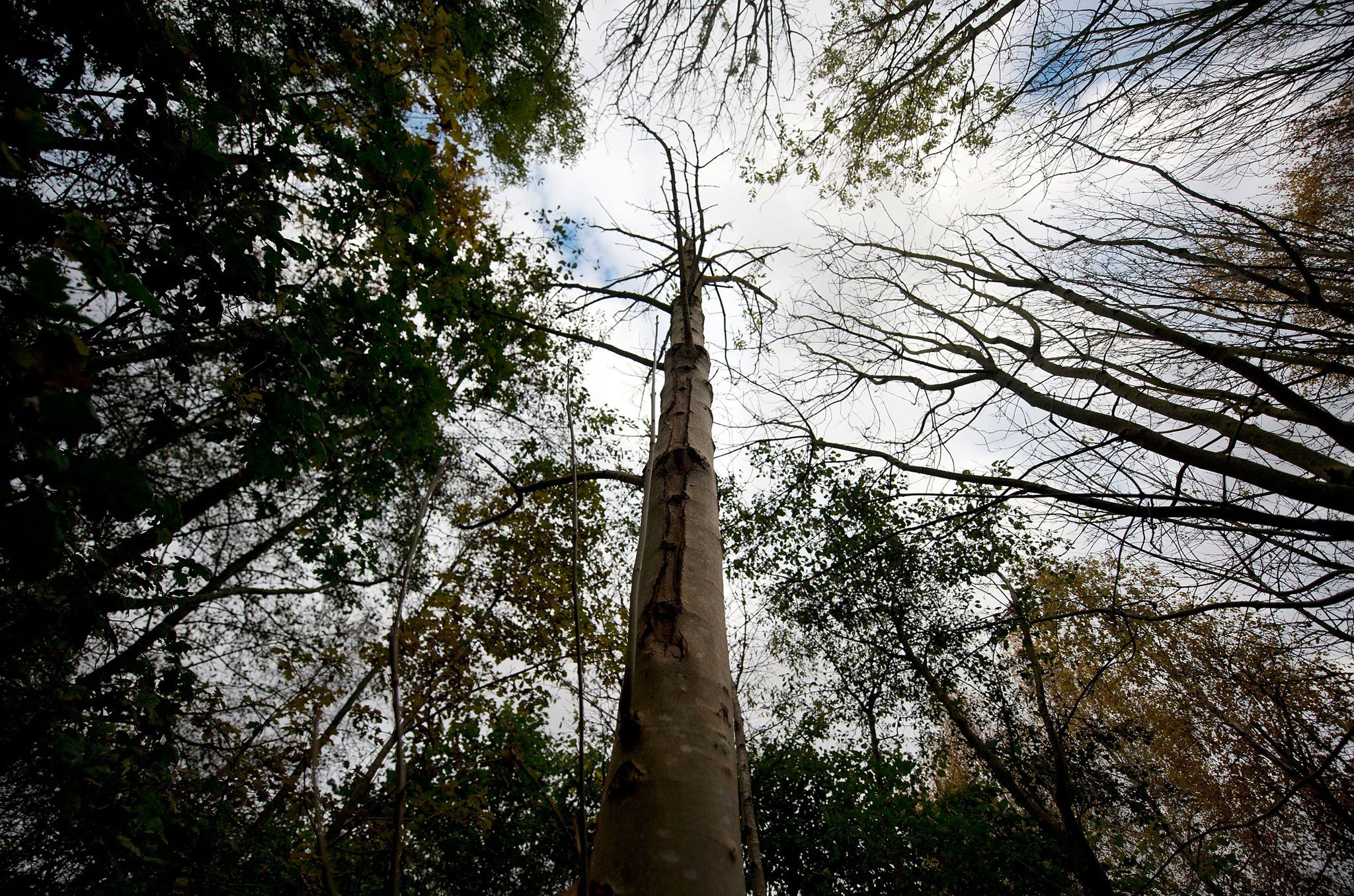Mourn the passing of the ash tree, but for conservationists, there is a silver lining
The deadly Chalara fungus threatens ash trees, but the dead wood will provide a cornucopia of invertebrates for birds to feed on

Your support helps us to tell the story
From reproductive rights to climate change to Big Tech, The Independent is on the ground when the story is developing. Whether it's investigating the financials of Elon Musk's pro-Trump PAC or producing our latest documentary, 'The A Word', which shines a light on the American women fighting for reproductive rights, we know how important it is to parse out the facts from the messaging.
At such a critical moment in US history, we need reporters on the ground. Your donation allows us to keep sending journalists to speak to both sides of the story.
The Independent is trusted by Americans across the entire political spectrum. And unlike many other quality news outlets, we choose not to lock Americans out of our reporting and analysis with paywalls. We believe quality journalism should be available to everyone, paid for by those who can afford it.
Your support makes all the difference.Jimi Hendrix was right. “Once you’re dead, you’re made for life,” the rock god commented at some point in his short existence. Unlikely though it is that he was referring to dying trees, his aphorism goes to the very heart of the cyclical process of life, death, decomposition and new life that characterises all plants and animals.
We will rightly mourn the demise of ash trees from our woods, copses and country lanes if most of them succumb to deadly Chalara fungus. But the dead wood they will provide will be an enormous boost for Britain’s biodiversity.
Dead wood is the richest habitat in a healthy forest. It supports a huge variety of wood-boring invertebrates – around 1,800 species – a veritable army of little rotters that slowly eat it up: beetles, hornets, weevils, wasp-mimicking flies, spiders and pseudoscorpions, plus a battalion of fungi whose thread-like filaments penetrate deep inside to slowly decompose it, returning its nutrients to the forest soil.
A forest with plenty of dead timber provides a cornucopia of invertebrates for birds such as nuthatches, warblers and woodpeckers to feast on. And large dead trees, because rot holes more easily develop in them, are good places for hole-breeding species like bats, jackdaws and tawny owls.
Britain-wide, we have interrupted this natural cycle. In woods managed for timber, trees are felled before they mature, denying them a chance to senesce and sport large dead limbs. In most other forests, fallen branches brought down by gales are carted away for public safety reasons, to be used for firewood, or simply to keep the place “tidy”.
On a woodland walk, we have become accustomed to a sanitised version of a natural forest. We no longer expect to see standing dead trees. So the borers have precious little sustenance and a fifth of them are now rare or endangered. But natural forests – those left to their own devices – are full of dead timber amongst the living trees, rich in rotting invertebrates and a plethora of fungi.
A survey in the late 1990s led by Dr Keith Kirby, a leading woodland expert, found that, out of 37 English broadleaved woods, three quarters had either no standing dead trees or less than two per hectare. A natural forest (Britain has none) might have more than 50. Belatedly, many foresters and woodland owners have woken up to the need to retain some dead wood. Others haven’t. Our woods still desperately need more of it.
If swathes of ash trees start dying Britain-wide, the policy of fell and burn to stop the spread of the fungus will serve no further purpose. Dead trees mustn’t be squandered. Provided they pose no safety hazard, let’s leave them where they are to decay and fall naturally, and to attract the army of little rotters waiting to do their vital work and enrich our woodland biodiversity.
Dr Malcolm Smith was chief scientist at The Countryside Council for Wales,1996-2004, and a board member of The Environment Agency, 2004-2010
Join our commenting forum
Join thought-provoking conversations, follow other Independent readers and see their replies
Comments